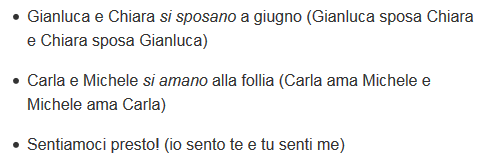 Reflexive verbs in Italian are easy to use if we understand the relationship between the subject of a sentence, the verb, and the direct object.
Reflexive verbs in Italian are easy to use if we understand the relationship between the subject of a sentence, the verb, and the direct object.
We can use a reflexive verb when the subject and the direct object are the same. The action that the subject does has effects on the subject itself. Think about the name that we use for these kinds of verbs: reflexive verbs means verbs that reflect, just like an image in a mirror. Think about this example when using reflexive verbs:
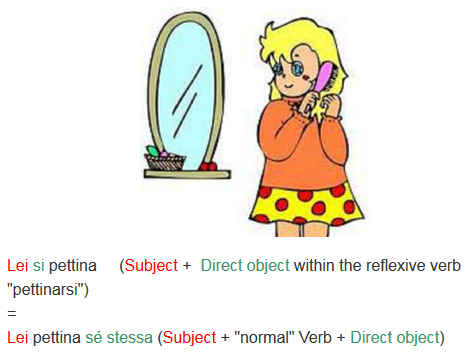
Almost all the verbs in Italian can have a reflexive form…however, the verb must be transitive (that is, the verb can have a direct object answering the questions who? or what?)
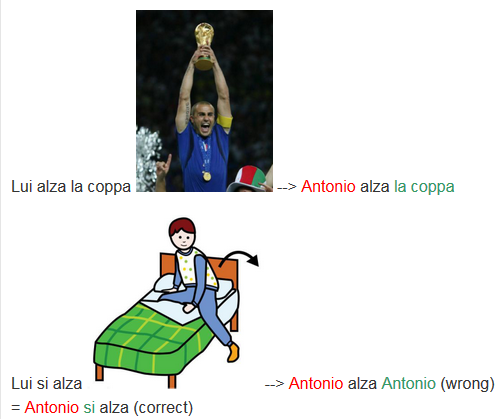
When subject and direct object are the same, as in the second picture, then we can use a reflexive verb!
In order to use a verb in its reflexive form, we must use reflexive pronouns…let’s look at them in detail:
Reflexive pronouns must always be close to the verb:
- They are used before the verb, when the verb is in the indicative, subjunctive, or conditional form:

- They are used after the verb, when the verb is in the gerundium or imperative form:

- In a few cases, you can choose whether to put the reflexive pronoun before or after the verb. This happens when you use a modal verb (want/can/must/know) or a phrasal verb followed by a reflexive verb in the infinitive form. Let’s look at a few examples to understand:
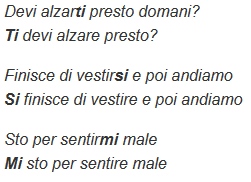
When you use a reflexive verb in the infinitive form, remember to take out the last letter of the ending (-are, -ere, -ire) before adding the pronoun:
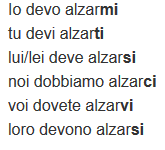
Indirect reflexive verbs
There are a few verbs that express actions that don’t have effects directly on the subject performing them, but still the subject is involved in them. These verbs are called indirect reflexive verbs, because they behave just like a reflexive verb, even though the subject and the direct object do not coincide. They are often used in colloquial language to put emphasis on a sentence.
Let’s look at some examples to understand:
![]()
(Wash your hands before coming to the dinner table)
In the sentece that all mums tell their children before meals, the verb “lavare” is used in a reflexive form, even though we can clearly see that the subject (you) is different from the direct object (the hands). The sentence should therefore be:
![]()
We prefer to use the indirect reflexive form in colloquial language to give more emphasis to the sentence. A couple more examples:

Reciprocal verbs in Italian
Reciprocal verbs work in the exact same way as reflexive verbs. However, they can only exist when the subject is plural. Reciprocal verbs express an action in which subjects are both the active and the passive member, that is they perform and they receive the action.
A few examples:
